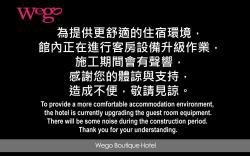Zhishanyan Hwaijh Temple Introduction
At the foot of Huiji Temple, there is a plaza resembling a meadow, adorned with models of sheep, giving the impression that ancient ancestors used to graze their livestock here. Following the staircase upward through the woods, one encounters a dim atmosphere, with moss growing on the cliffs nearby, creating an ancient ambiance. Along the way, there is a stone archway, which is a historical relic of Zhishan. After passing through, the path opens up considerably; after a turn, it becomes clear and flat, starkly contrasting with the previous environment, where Huiji Temple is situated. When the people from Zhangzhou arrived in Shilin, they also brought their guardian deity, Kaizhang Sheng Wang, along. According to legend, Zhishan was originally land owned by a wealthy man named Huang Shan. About two hundred years ago, Huang Chengqing, a relative from Pinghe County in Zhangzhou, brought the incense of Kaizhang Sheng Wang to Taiwan and hung it on Zhishan, where miraculous occurrences were reported. The community pooled their resources to construct Huiji Temple in 1752. Shortly after, in order to worship Avalokitesvara Buddha, it was also known as Zhishan Rock Temple. In 1840, Pan Yongqing, a gentleman from Shilin, established a Wenchang Shrine on Zhishan Rock and hired teachers to educate the local children. By 1874, the three temples merged and have since been collectively referred to as Huiji Temple. Nowadays, many visitors come to Huiji Temple to pray for success in exams. There is a Wenchang Pen here, and it is said that touching the "Wenchang Pen" will bring blessings, so parents often bring their children to touch the pen in hopes of success in their examinations.
























